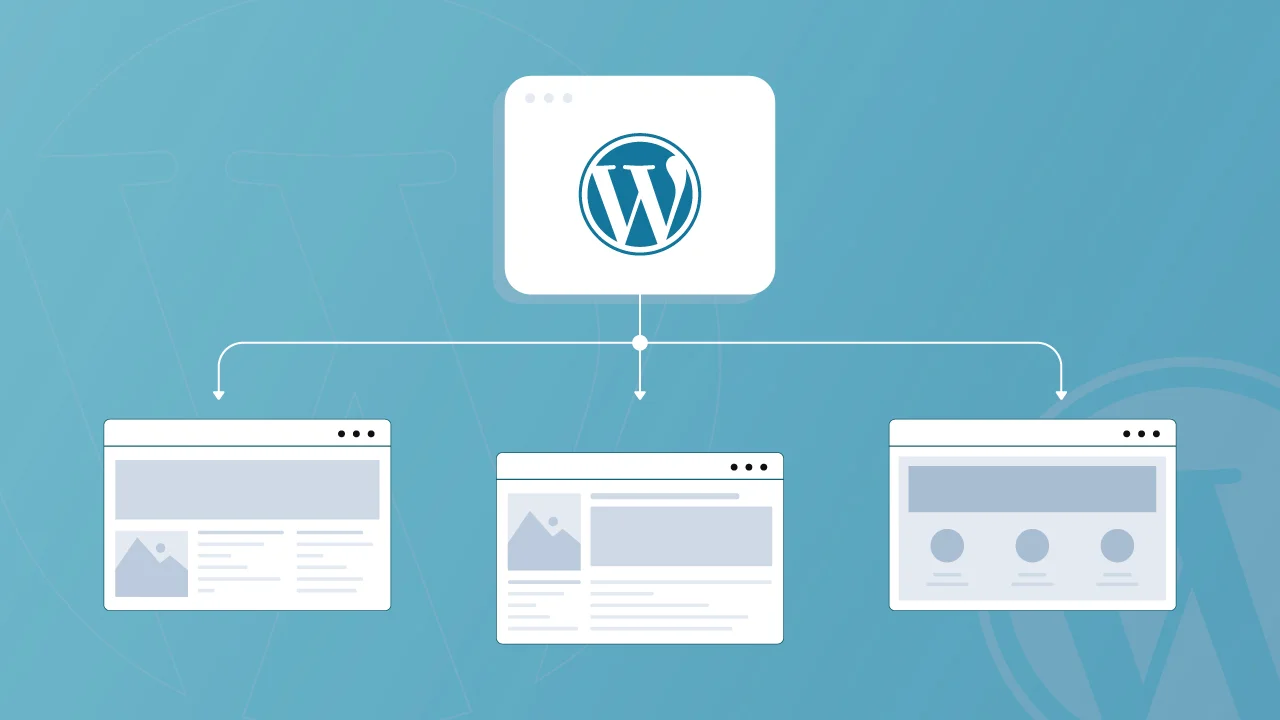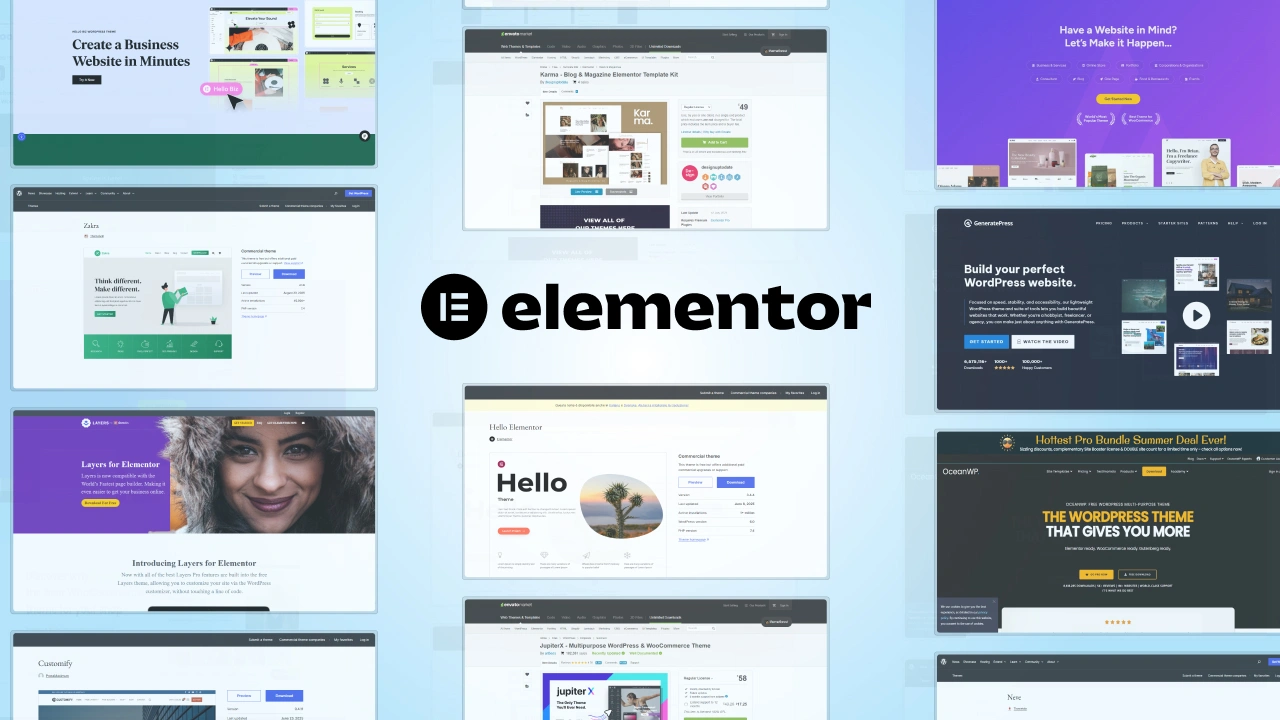Though WordPress began as a simple blogging tool, it has gradually evolved into a robust content management system (CMS) powering millions of websites worldwide. Its flexibility, coupled with a vast ecosystem of themes and plugins, makes it a popular choice for individuals and businesses alike.
What is WordPress Multisite?
WordPress Multisite is a powerful feature that allows you to create and manage multiple websites from a single WordPress installation. Instead of having separate WordPress installations for each website, you can house them all under one umbrella.
Key Features and Differences from a Standard WordPress Installation
- Centralized Management: Manage all your websites from a single dashboard, streamlining updates, plugin management, and user administration.
- Shared Resources: Multisite websites share core WordPress files and the database, reducing server load and storage requirements.
- Subsites: Each individual website within a multisite network is called a “subsite.” Subsites have their own content, themes, and plugins, but they share the core WordPress installation.
- Network Administration: There’s a distinct level of administration for the entire network, allowing you to manage global settings, themes, plugins, and user roles.
- Subsite Administration: Each subsite has its own administrator who can manage content, users, and settings specific to that site.
Examples of Use Cases
WordPress Multisite is ideal for various scenarios:
- Corporate Intranets: Create multiple internal websites for different departments or teams.
- School or University Networks: Establish websites for different departments, campuses, or student organizations.
- Franchise or Multi-location Businesses: Manage websites for individual branches or locations.
- Online Communities: Build a platform where users can create their own subsite, such as personal blogs or forums.
- Client Websites: Host multiple client websites on a single installation for easier management.
Should You Use WordPress Multisite?
WordPress Multisite can be a powerful tool for managing multiple websites, but it’s not a one-size-fits-all solution. Carefully consider the following factors before deciding if it’s right for you:
When to Use WordPress Multisite
- Multiple Related Websites: If you manage several websites that share similar content, branding, or functionality (e.g., different locations of a business, a network of blogs under a single brand), Multisite can simplify management and save resources.
- Online Communities or Directories: Platforms where users create their own content, such as forums, member directories, or review sites, benefit greatly from Multisite’s ability to create individual sites for each user or group.
- Cost Efficiency: If you’re hosting multiple WordPress installations on the same server, Multisite can optimize resource usage and potentially reduce hosting costs.
- Centralized Control: For organizations that need to maintain consistent branding, security, and plugin updates across multiple websites, Multisite offers centralized management.
When to Avoid WordPress Multisite
- Unrelated Websites: If your websites have vastly different content, designs, or purposes (e.g., a personal blog and an e-commerce store), Multisite might not be the best fit.
- Performance Concerns: High-traffic websites or those with resource-intensive plugins may experience performance issues with Multisite. Consider the potential impact on website speed and user experience.
- Complex User Management: If you require granular control over user permissions and data isolation, separate WordPress installations might offer better flexibility.
- Technical Challenges: Setting up and managing Multisite requires technical expertise. If you’re not comfortable with WordPress administration, you might encounter difficulties.
How WordPress Multisite Works
WordPress Multisite is like having a whole bunch of websites living under one roof. It’s built on the same foundation as regular WordPress, but it adds some special tools for managing multiple sites at once.
To really understand what makes Multisite different, let’s explore how it works.
1. Installation and Setup
Overview of How to Install and Activate Multisite in WordPress
Activating Multisite in WordPress involves a few simple steps, but it’s crucial to prepare your site before diving in. Here’s a quick overview:
- Backup Your Site: Before making any major changes, it’s important to back up your WordPress site to prevent data loss.
- Enable Multisite:
- Open the wp-config.php file in your WordPress root directory.
- Add the following line of code just above the line that says /* That’s all, stop editing! Happy blogging. */:
- Save the file and reload your WordPress dashboard. You will now see a new “Network Setup” option under the “Tools” menu.
- Network Setup:
- Go to Tools > Network Setup. Here, you’ll choose between subdomains (e.g., site1.example.com) and subdirectories (e.g., example.com/site1) for your network.
- Enter the required details, such as the network title and the admin email.
- Click “Install” to proceed.
- Finalize the Setup:
- Follow the instructions provided to add additional lines of code to your wp-config.php and . htaccess files.
- After updating these files, log in again to access the Multisite Network Admin Dashboard.
Configuration Options (Subdomains vs. Subdirectories)
When setting up a Multisite network, you need to decide how your sites will be structured:
- Subdomains: Each site in the network will have its own subdomain (e.g., site1.example.com). This option requires that your hosting provider supports wildcard subdomains.
- Subdirectories: Sites will be structured as subdirectories of your main domain (e.g., example.com/site1). This is often simpler to set up, especially if you don’t have control over DNS settings.
Your choice depends on your specific needs and your hosting environment. Subdomains are better for separating each site more distinctly, while subdirectories offer a more unified URL structure.
2. Network Administration
Overview of the Network Admin Dashboard
The Network Admin Dashboard is your central control panel for managing your Multisite network. It’s similar to the regular WordPress dashboard but with additional options specific to network management.
- Accessing the Dashboard: After setting up Multisite, you can access the Network Admin Dashboard from the “My Sites” menu in the top left corner of your WordPress dashboard.
- Dashboard Sections:
- Sites: Manage all the sites in your network. You can add new sites, delete old ones, and manage site settings.
- Users: Manage users across the entire network. You can assign roles, manage user accounts, and handle permissions.
- Themes: Control which themes are available to sites in your network.
- Plugins: Manage plugins that can be activated across the network or on individual sites.
- Settings: Configure network-wide settings, including site registration options, default themes, and more.
Managing Sites Within the Network
In the Network Admin Dashboard, the “Sites” section allows you to oversee all the websites in your network:
- Adding New Sites: Click “Add New” to create a new site within your network. You’ll need to provide a site address, title, and admin email.
- Managing Existing Sites: Each site can be individually managed by clicking “Edit.” Here, you can modify settings, themes, users, and more specific to that site.
User Roles and Permissions in a Multisite Network
User roles in a Multisite network operate similarly to those in a single WordPress site, but with some key differences:
- Super Admin: This is the highest level of access, allowing full control over the entire network, including all sites within it. Only a super admin can install themes and plugins and manage network settings.
- Site Admin: Each site within the network has its own administrator, who can manage their specific site, including content, users, and settings, but they cannot access other sites in the network or network-wide settings.
- Other Roles: Standard WordPress roles (Editor, Author, Contributor, Subscriber) are available within each site, with permissions restricted to that site alone.
3. Shared Resources
How Themes and Plugins are Shared Across the Network
In a Multisite network, themes and plugins are shared resources, meaning they are installed once and can be used across all sites within the network.
Themes:
- Network admins can install themes in the Network Admin Dashboard.
- Once installed, a theme can be activated for individual sites or network-wide.
- Site admins can choose from the themes made available by the super admin, but they cannot install new themes themselves.
Plugins:
- Similar to themes, plugins are installed by the super admin and can be activated across the entire network or on a per-site basis.
- Network activation means the plugin will be active on all sites, while individual site activation allows site admins to choose whether to use the plugin on their site.
Managing Updates Across Multiple Sites
One of the biggest advantages of Multisite is the ease of managing updates. When an update for a theme or plugin is available, the super admin can update it in one place, and the changes will be applied across all sites using that resource. This centralized management ensures consistency and saves time.
4. Customization
Customizing Individual Sites Within the Network
While Multisite provides a unified management experience, each site within the network can be customized individually to meet its specific needs.
- Site-Specific Settings: Site admins can configure settings, such as permalinks, media settings, and general site information, independently of other sites.
- Content Management: Each site has its own separate content (posts, pages, media), allowing for complete editorial independence.
Using Different Themes and Plugins for Different Sites
One of the key features of WordPress Multisite is the ability to offer different themes and plugins to different sites within the network:
- Themes: Although themes are installed network-wide, each site can choose which theme to activate. This allows for diverse designs and layouts across your network while maintaining centralized control.
- Plugins: Similar to themes, plugins can be activated on a per-site basis. This means that while a plugin is available across the network, it can be used only where needed, giving each site tailored functionality.
Advantages of WordPress Multisite
Centralized Management: Streamline your workflow with a unified control panel. Manage multiple websites, users, and content from a single dashboard, saving time and effort.
Consistency Across Sites: Maintain a cohesive brand identity across your network. Ensure consistent design, functionality, and user experience on all sites.
Resource Efficiency: Optimize server performance and reduce costs by sharing themes, plugins, and other resources among multiple websites.
Scalability: Easily expand your online presence. Add new websites to your network as your business grows without the need for separate installations.
User Management: Simplify user management by creating and managing user roles and permissions centrally. Provide consistent access levels across your network.
How to Get Started with WordPress Multisite
Setting up WordPress Multisite is a powerful way to manage multiple websites under a single installation. However, before you dive in, there are some prerequisites to consider, along with a step-by-step guide to help you get started. This section also includes best practices to ensure your Multisite network runs smoothly.
Prerequisites: What You Need Before Setting Up Multisite
Before you begin setting up WordPress Multisite, ensure you have the following in place:
- Appropriate Hosting:
- Server Resources: Multisite can be resource-intensive, especially with many sites or high traffic. Ensure your hosting plan can handle the additional load. A VPS (Virtual Private Server) or a dedicated server is recommended over shared hosting.
- Wildcard Subdomains: If you plan to use subdomains for your sites (e.g., site1.example.com), ensure your hosting provider supports wildcard subdomains. This allows all subdomains to be directed to your WordPress installation.
- Domain Setup:
- Single Domain: Decide if you want to use subdomains (e.g., site1.example.com) or subdirectories (e.g., example.com/site1) for your network. The choice depends on your preference and your hosting capabilities.
- Wildcard Subdomain Setup: If using subdomains, configure a wildcard DNS record (typically * .example.com) in your domain’s DNS settings to ensure all subdomains point to your WordPress installation.
- Updated WordPress Installation:
- Ensure your WordPress installation is up-to-date to avoid compatibility issues during the Multisite setup. Updating WordPress can prevent potential bugs and security vulnerabilities.
- Backups:
- Full Site Backup: Backup your entire WordPress site (files and database) before enabling Multisite. This ensures you can restore your site if anything goes wrong during the setup process.
Step-by-Step Guide
-
Enabling Multisite in WordPress
Activating Multisite is straightforward but requires editing some core WordPress files:
- Edit the wp-config.php File:
- Use an FTP client or your hosting control panel to access the root directory of your WordPress installation.
- Open the wp-config.php file.
- Add the following line of code just above the comment /* That’s all, stop editing! Happy blogging. */:
- Save the file and upload it back to your server if using an FTP client.
- Log in to your WordPress dashboard and navigate to Tools > Network Setup.
- Choose whether to use subdomains or subdirectories for your sites.
- Enter a network title and your admin email address.
- Click “Install.”
- After the network is installed, WordPress will provide code snippets that need to be added to your wp-config.php and htaccess files.
- Copy and paste the provided code into the respective files and save your changes.
- Log in again to access your new Network Admin Dashboard.
define(‘WP_ALLOW_MULTISITE’, true);
2. Install the Network:
3. Update Configuration Files:
-
Configuring Network Settings
Once Multisite is enabled, you’ll need to configure your network:
- Network Admin Dashboard:
- Access the Network Admin Dashboard from the “My Sites” menu in the top left corner of your WordPress dashboard.
- Here, you can manage all sites, themes, plugins, and network settings.
- General Network Settings:
- Go to Settings > Network Settings within the Network Admin Dashboard.
- Configure options such as allowing site registrations, setting a default theme, and enabling or disabling administrative privileges for individual site admins.
-
Adding and Managing Sites in the Network
Managing sites within your network is simple:
- Adding New Sites:
- Navigate to Sites > Add New within the Network Admin Dashboard.
- Enter the site address, title, and admin email.
- Click “Add Site” to create the new site.
- Managing Existing Sites:
- Go to Sites > All Sites to view and manage all sites in your network.
- You can edit site details, including its title, URL, and admin users, by clicking “Edit” under the site name.
- Assigning Admin Roles:
- Assign a specific site admin to each site within the network.
- Site admins have control over their own site’s content and settings but cannot manage other sites in the network.
Best Practices
-
Backup Strategies
- Regular Backups: Regularly back up your entire Multisite network, including databases and files. This ensures that you can restore your sites in case of data loss or corruption.
- Automated Backups: Consider using a backup plugin that supports Multisite and can automate the backup process. Store backups in a remote location to safeguard against server issues.
-
Regular Updates and Security Checks
- Keep WordPress Updated: Always run the latest version of WordPress to ensure your Multisite network is secure and up-to-date with the latest features.
- Update Themes and Plugins: Regularly update themes and plugins across the network to protect against vulnerabilities. Test updates in a staging environment before applying them network-wide.
- Security Plugins: Install a security plugin that supports Multisite to monitor for malware, enforce strong passwords, and manage firewall settings.
-
Monitoring Network Performance
- Performance Monitoring Tools: Use tools like Google Analytics, New Relic, or specialized WordPress plugins to monitor the performance of your network and identify potential bottlenecks.
- Optimize Database: Regularly optimize your WordPress database to keep it running smoothly, especially as the network grows.
- Content Delivery Network (CDN): Implement a CDN to speed up site loading times across your network, especially if you have a global audience.
Now that you have a comprehensive understanding of WordPress Multisite, it’s time to evaluate whether it’s the right solution for your needs. If you’re managing multiple websites or planning to expand your online presence, Multisite could be a game-changer, providing you with the tools to efficiently handle everything from one central dashboard. Take some time to assess your current setup, and consider whether the benefits of Multisite align with your goals.
If you’re ready to dive deeper, don’t hesitate to explore further resources or consult with experts at cmsMinds who can help you set up and optimize your Multisite network.
Let cmsMinds help you build a robust and scalable network. Contact us today for expert consultation and implementation services.





